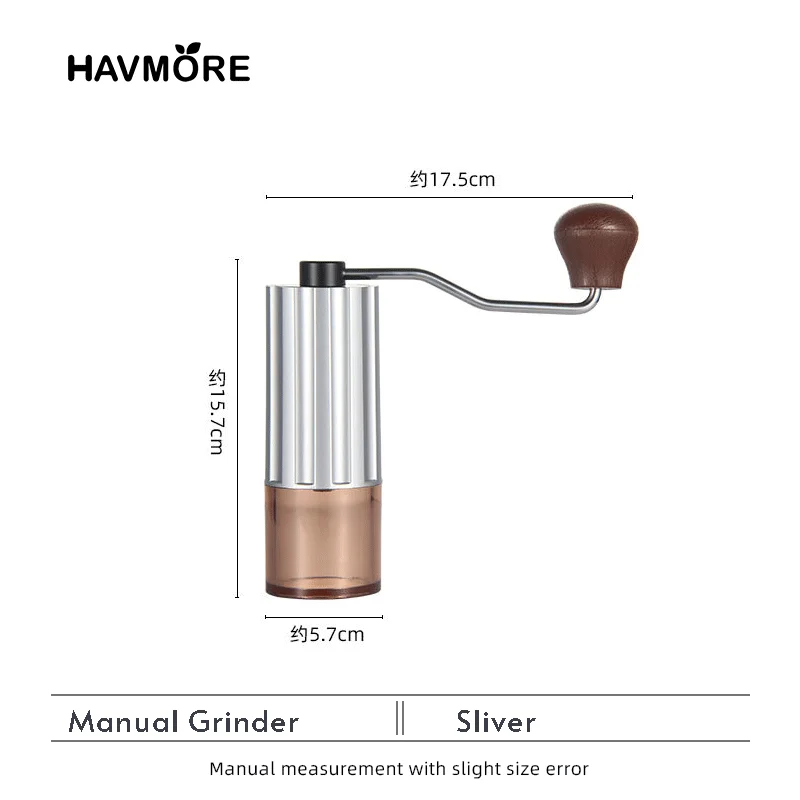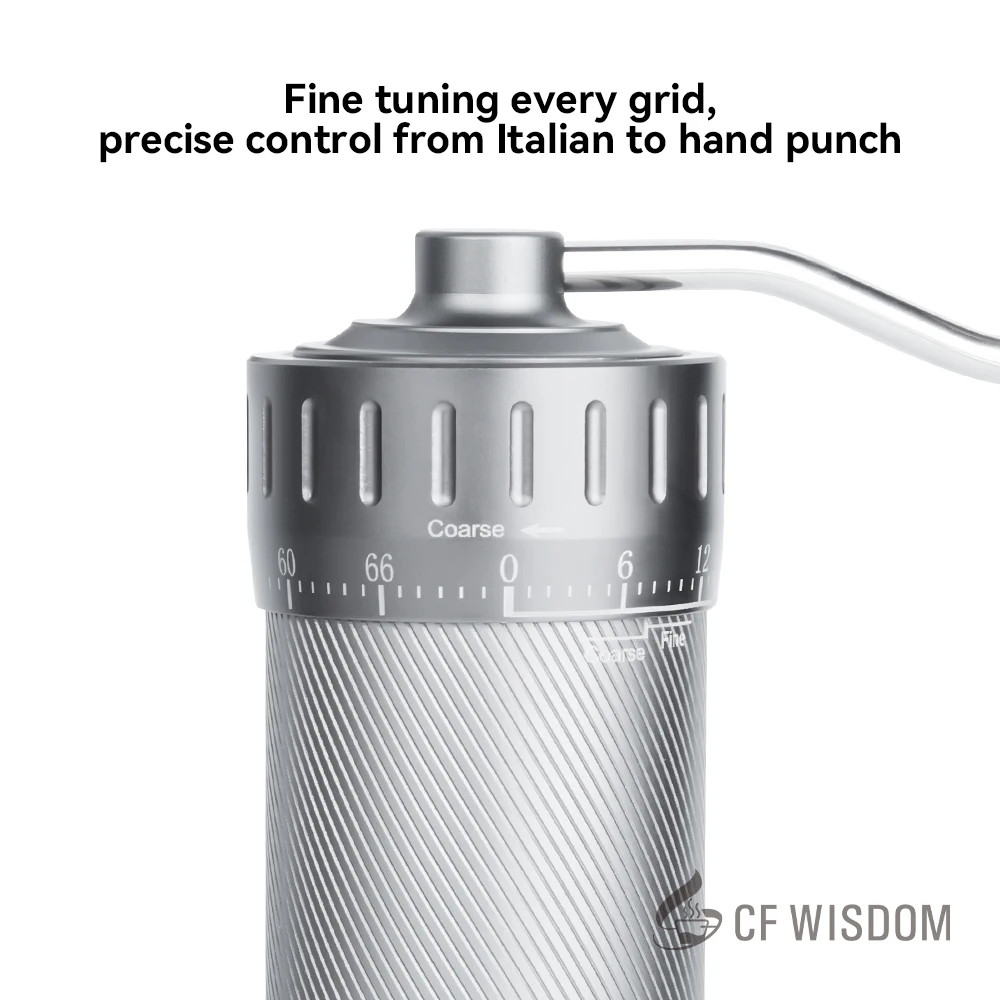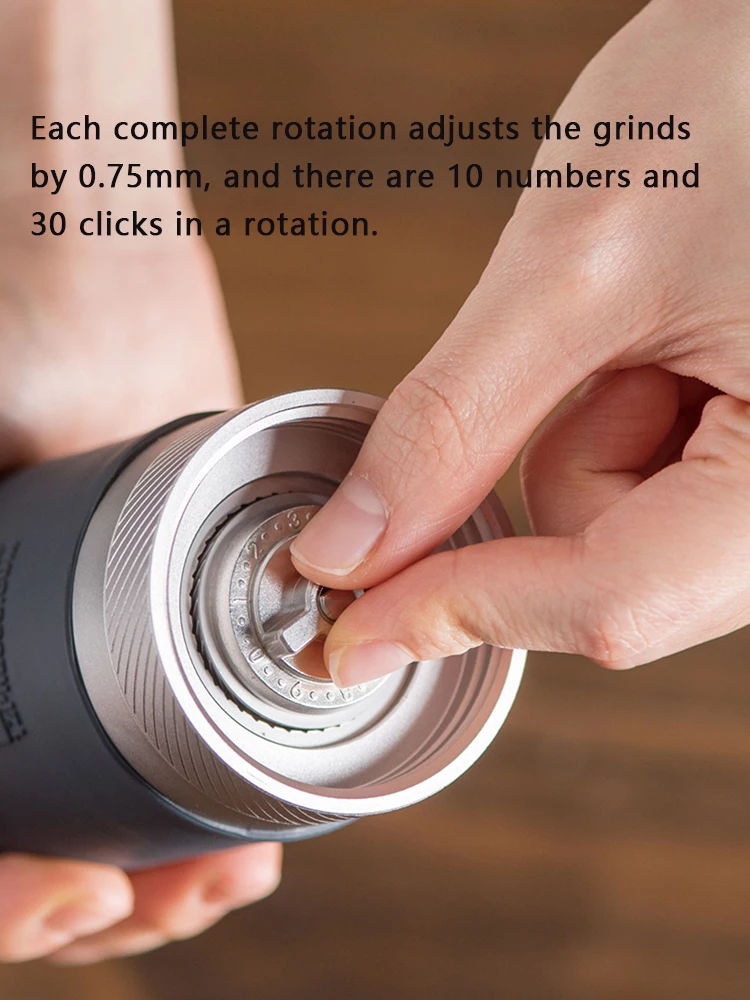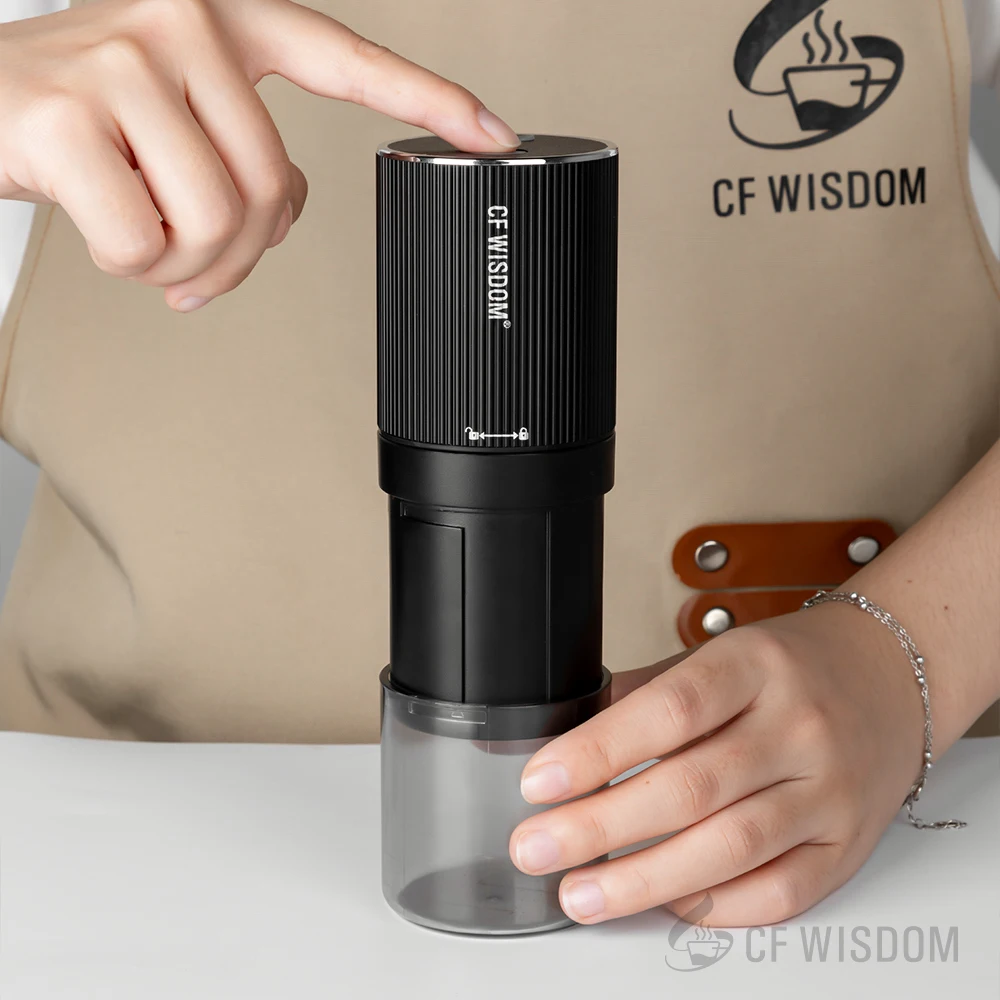Why Worry About Heat? Understanding Flavor Degradation in Coffee
Coffee lovers often focus on bean origin, roast profile, and brewing methods, but the grinding process itself can significantly impact your final cup. When using all-metal coffee grinder designs, heat generation becomes a crucial factor that can make or break your morning brew.
Heat is the silent destroyer of coffee flavor. As temperature rises during grinding, volatile aromatic compounds—the elements responsible for those delightful fruity, floral, and complex notes—begin to evaporate prematurely. This flavor loss begins at surprisingly low temperatures, with noticeable degradation starting around 140°F (60°C).
The consequences of heat-affected coffee include:
- Loss of delicate flavor notes, particularly the bright acidic and fruity characteristics
- Increased bitterness and astringency in the final cup
- Flatter, less complex flavor profile with muted aromatics
- Inconsistent extraction during brewing, leading to an unbalanced taste
Research suggests that even modest temperature increases during grinding can cause up to 15% loss of certain volatile compounds. This is particularly concerning when coffee grinders overheat during operation, transforming your specialty beans into a shadow of their potential.
The difference is readily apparent in taste tests. Coffee ground in cooler conditions typically offers clearer flavor distinction, enhanced sweetness, and more pronounced aromatics compared to beans subjected to excessive heat during grinding. For coffee enthusiasts investing in quality beans, this flavor degradation essentially wastes both money and potential enjoyment.
Understanding this relationship between heat and flavor is the first step toward better brewing, whether you’re using stainless steel manual coffee grinders or electric models.
The Science Behind Heat Generation in Metal Grinders
To tackle the heat issue effectively, we need to understand its origins. In coffee grinders, heat isn’t generated from a single source but rather emerges from several mechanisms working simultaneously.
The primary heat generators in coffee grinders include:
Friction Between Burrs
The most significant source of heat comes from the direct friction as coffee beans are crushed and cut between grinding burrs. As these metal surfaces work against each other and the beans, mechanical energy converts to thermal energy. This process is unavoidable in any grinding method but varies in intensity depending on burr design and operation speed.
Motor Heat Transfer
In electric grinders, the motor generates heat during operation, which can transfer to the grinding mechanism and subsequently to the coffee grounds. Even high-quality motors produce heat, especially during extended grinding sessions.
Metal’s Thermal Conductivity
Here’s where material choice becomes critical. Metals are excellent heat conductors, meaning they efficiently transfer heat throughout the grinder body. Burr heat affects coffee grounds directly because metal burrs quickly conduct heat to the beans they’re processing.
Different metals exhibit varying thermal properties:
- Stainless steel has moderate thermal conductivity (16 W/m·K) and tends to hold heat longer
- Aluminum has high thermal conductivity (205-250 W/m·K), causing rapid heat distribution
- Cast iron has lower conductivity (80 W/m·K) but substantial heat retention due to mass
Temperature measurements reveal that heat retention in steel vs ceramic burrs differs significantly. Steel burrs typically show a 10-15°F (5-8°C) increase in ground coffee temperature during operation, which is enough to affect flavor compounds. This heat increase happens rapidly, with most temperature gain occurring within the first 20-30 seconds of continuous grinding.
Understanding these heating mechanisms helps explain why metal grinders, despite their many advantages in durability and precision, require special consideration to minimize flavor degradation from excess heat.
Metal vs. Alternative Materials: A Heat-Focused Comparison
When examining coffee grinder materials from a heat perspective, it’s important to consider both how quickly heat builds up and how it affects your grounds. Different materials offer distinct advantages and compromises.
| Material | Heat Conductivity | Temperature Increase | Durability | Grind Precision | Cost |
|---|---|---|---|---|---|
| Stainless Steel | Moderate | 10-15°F (5-8°C) | Excellent | Excellent | Higher |
| Ceramic | Low | 3-5°F (2-3°C) | Good (brittle) | Very Good | Moderate |
| Titanium | Low | 5-8°F (3-5°C) | Excellent | Excellent | Highest |
| Composite | Very Low | 2-4°F (1-2°C) | Moderate | Good | Moderate |
Steel burrs, common in most premium grinders, offer exceptional durability and precision but come with higher heat retention. These burrs stay sharp longer and can achieve more consistent particle size, especially important for espresso preparation. However, they conduct heat more readily than alternatives.
Ceramic burrs, in contrast, act as thermal insulators, showing minimal temperature increase during operation. This makes them potentially advantageous for heat-sensitive grinding, though they sacrifice some durability as ceramics can chip or crack if foreign objects enter the grinding chamber.
When selecting the best material for coffee grinders, consider your specific needs. For example, many high-end manual coffee burr grinders use steel burrs for longevity while incorporating design elements that minimize heat transfer to the grounds.
It’s worth noting that material choice goes beyond just the burrs—the entire grinder construction affects heat management. Grinders with aluminum bodies might dissipate heat more quickly than those with stainless steel exteriors, though this can be both advantageous and disadvantageous depending on design.

Advanced Solutions: Burr Coatings That Reduce Heat
One of the most innovative approaches to managing heat in metal grinders involves applying specialized coatings to the burrs. These high-tech surface treatments maintain metal’s durability advantages while reducing friction and heat generation.
Common burr coatings include:
Titanium Nitride (TiN): This gold-colored coating reduces friction by up to 25% compared to uncoated steel. TiN-coated burrs generate less heat while extending burr life through improved hardness.
Diamond-Like Carbon (DLC): This remarkable coating creates an extremely slick surface with a friction coefficient nearly 40% lower than uncoated steel. DLC coatings can reduce grinding temperatures by 5-7°F (3-4°C) during extended use.
Boron Carbide Nitride (BCN): Offering superior hardness and reduced friction, BCN coatings minimize both heat generation and burr wear over time.
Laboratory testing consistently demonstrates that coated burrs require less force to cut through beans, directly translating to reduced heat production. This efficiency means less thermal impact on delicate coffee compounds, particularly those responsible for fruity and floral notes.
Beyond temperature benefits, coated burrs typically maintain their edge precision longer, providing more consistent grind particle distribution over time. This consistency is particularly valuable for preparing espresso, where slight variations in grind size dramatically affect extraction.
The advantages of these advanced coatings make them increasingly common in premium precision manual grinders where quality and consistency are prioritized over cost. While these coatings add to the initial price, they provide long-term benefits through improved flavor preservation and extended burr lifespan.
Grinder Design Features That Combat Heat Buildup
Beyond material choices, several design elements significantly influence how heat develops and transfers during grinding. Smart engineering can mitigate many heat-related issues even in all-metal grinders.
Burr Geometry and Size
Burr shape plays a crucial role in heat generation:
- Conical burrs typically generate less heat than flat burrs due to their geometry and grinding action
- Flat burrs offer exceptional precision but can produce more heat due to greater surface contact area
Burr size directly impacts grinding efficiency and heat. Larger burrs (64-70mm) can grind the same amount of coffee faster than smaller ones (50mm), requiring less time and generating less cumulative heat. The definitive guide to coffee grinder burr size explains how larger burrs allow for lower RPM grinding while maintaining throughput, reducing thermal buildup.
Motor and Speed Design
In electric grinders, motor specifications significantly affect heat generation:
- Lower RPM designs (400-1000 RPM) produce less friction heat than high-speed grinders (1200+ RPM)
- Direct-drive motors often run cooler than geared systems
- Quality motors with thermal management features prevent heat transfer to the grinding chamber
Ventilation and Cooling Systems
Advanced grinders incorporate:
- Strategically placed vents that promote airflow around burrs
- Heat sinks that draw thermal energy away from grinding surfaces
- Thermal breaks and barriers that isolate heat-generating components
Manual grinders have inherent advantages in preventing heat transfer in hand grinders since they lack motors. However, thoughtful design elements like reduced contact points between burrs and grinding chambers can further minimize heat transmission to coffee grounds.
Some premium grinders also feature stepped grinding operations that allow burrs to cool between grinding phases, especially beneficial for larger batch sizes. These design considerations show that metal grinders can be engineered to minimize heat impact despite their material properties.
Practical Tips: Minimizing Heat During Your Grinding Routine
Even with the perfect grinder, your grinding technique significantly impacts heat development. These practical approaches can help you minimize heat regardless of your equipment:
Grind in smaller batches – Limiting batch size to 15-20g (single-dose grinding) reduces continuous friction and heat buildup. This approach is particularly effective with metal grinders, where extended operation causes temperature increases.
Use pulse grinding – Rather than grinding continuously, use short bursts of 5-10 seconds with pauses between. This allows minimal cooling time and reduces cumulative heat. For electric grinders, this might mean grinding in 10-second intervals with 5-10 second pauses.
Clean regularly – Bean oils and fine particles increase friction between burrs. Regular cleaning (every 1-2 weeks for daily users) maintains efficiency and reduces unnecessary heat generation. Pay special attention to the burrs themselves and channels where grounds exit.
Consider bean temperature – Room temperature or slightly cooled beans can help offset grinding heat. While the controversial practice of freezing beans has mixed reviews, starting with beans that are 5-10°F below room temperature can help counterbalance grinding heat.
Allow cooling between uses – If grinding multiple batches, give your grinder 3-5 minutes between sessions to dissipate heat, especially when using all-metal hand grinders.

Fine Adjustment Hand Grinder, Precision Manual Grinder, Travel Coffee Grinder
Price range: $185.11 through $494.63 Select options This product has multiple variants. The options may be chosen on the product pageHand Burr Grinder, Hand Crank Coffee Grinder, Manual Espresso Grinder, Portable Coffee Grinder
Price range: $262.72 through $300.22 Select options This product has multiple variants. The options may be chosen on the product pageManual Burr Mill, Manual Coffee Grinder Stainless Steel, Manual Coffee Mill Grinder, Mechanical Coffee Grinder
Price range: $127.26 through $130.32 Select options This product has multiple variants. The options may be chosen on the product pageHand Burr Grinder, Manual Coffee Grinder Stainless Steel, Precision Manual Grinder
Price range: $183.64 through $187.52 Select options This product has multiple variants. The options may be chosen on the product page
- Maintain your equipment – Keep burrs properly aligned and adjusted. Misaligned burrs create excess friction and heat while delivering inconsistent results. Follow manufacturer guidelines for periodic maintenance schedules.
These simple techniques can significantly reduce the thermal impact on your coffee, preserving more of the flavor compounds you’re paying for in quality beans. The difference can be particularly noticeable with light roasts and complex single-origin coffees where delicate aromatics define the cup character.
Common Myths About Heat in Metal Grinders
Despite legitimate concerns about heat, several misconceptions have emerged that require clarification:
Myth: All metal grinders ruin coffee flavor through heat
Fact: Well-designed metal grinders with proper operation can produce excellent results with minimal heat impact. Quality engineering and user technique matter more than material alone.
Myth: Pre-heating grinders improves consistency
Fact: While commercial shops sometimes “season” grinders to reach thermal equilibrium, for home use, starting with cool equipment minimizes overall heat exposure for your beans.
Myth: Heat issues are identical in commercial and home settings
Fact: Commercial environments involve continuous operation where heat builds progressively. Home grinding typically involves short, intermittent use where starting temperature has more impact than cumulative heating.
Myth: Metal grinders can’t be used for light roasts
Fact: While light roasts are more vulnerable to heat-related flavor loss, quality metal grinders with proper technique are perfectly capable of preserving their delicate characteristics.
Myth: Ceramic always outperforms metal for heat management
Fact: High-quality metal burrs with advanced designs or coatings can sometimes perform better overall than basic ceramic options, despite ceramic’s inherent thermal advantages.
Blind taste tests comparing properly used metal grinders against ceramic alternatives often show negligible differences, particularly when using all-metal manual coffee grinders with technique-focused approaches to heat management.
Understanding these nuances helps avoid unnecessary constraints in grinder selection while focusing on factors that genuinely impact cup quality.
What to Look For: Choosing a Metal Grinder with Low Heat Retention
When shopping for a metal grinder that minimizes heat issues, several key features deserve your attention:
Heat-Focused Features Checklist
- Burr Coating: Look for TiN, DLC, or other friction-reducing surface treatments
- Burr Design: Prefer conical burrs for reduced heat generation
- Burr Size: Larger burrs (>58mm) allow faster grinding with less heat buildup
- Motor Specifications: For electric grinders, direct-drive motors with lower RPM (under 1000) typically generate less heat
- Ventilation: Check for adequate airflow design around the grinding chamber
- Thermal Breaks: Design elements that separate heat-generating components from the grinding path
- Construction Materials: Consider if the grinder incorporates heat-dissipating elements alongside steel components
These features typically become available in manual grinders priced above $150 and electric models starting around $300. However, there are excellent reasons to choose an all-metal coffee grinder beyond heat considerations, including durability, grind consistency, and long-term value.
When evaluating product descriptions, look for specific terminology indicating heat management, such as “heat-treated burrs,” “thermal management system,” or “reduced friction design.” These suggest the manufacturer has considered thermal properties in their engineering process.
Remember that heat management should be balanced against other crucial factors like grind consistency, durability, ease of use, and maintenance requirements. The ideal grinder minimizes heat while excelling in these other essential areas.

FAQs: Your Heat Retention Questions Answered
Q: Do metal grinders always produce more heat than ceramic ones?
A: Generally yes, metal conducts heat more efficiently than ceramic. However, well-designed metal grinders with proper technique can minimize heat impact, sometimes performing comparably to ceramic alternatives.
Q: How much temperature increase is too much during grinding?
A: Ideally, keep temperature increases under 10°F (5°C) from ambient. Beyond 15°F (8°C), noticeable flavor degradation can occur, especially with light roasts.
Q: Can I still use a metal grinder for light-roasted specialty coffee?
A: Absolutely. Use smaller batch sizes, pulse grinding techniques, and choose a quality grinder with heat-management features to preserve delicate flavors.
Q: How often should I clean my grinder to minimize heat from friction?
A: For daily users, a thorough cleaning every 1-2 weeks prevents buildup that increases friction. Monthly deep cleaning helps maintain optimal performance.
Q: Are manual grinders better than electric ones for heat management?
A: Typically yes. Manual grinders generate less heat due to slower operation speed and absence of motor heat. However, premium electric grinders with advanced cooling designs can perform exceptionally well too.
By understanding how heat affects your coffee and implementing these insights, you’ll extract the full potential from your beans, regardless of your grinder type. The perfect cup is a delicate balance of many factors, and managing heat during grinding is an often overlooked but crucial element in that equation.







